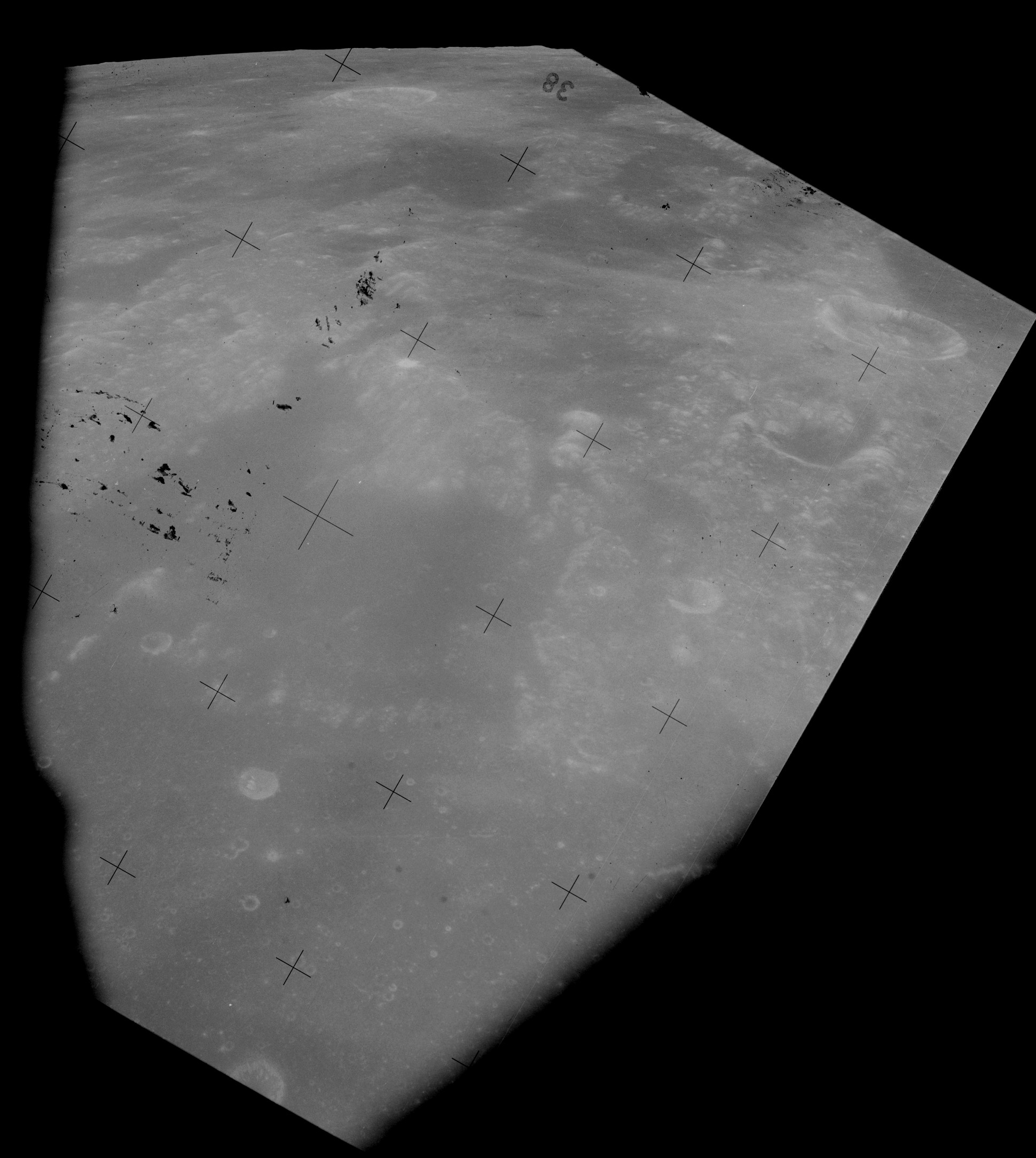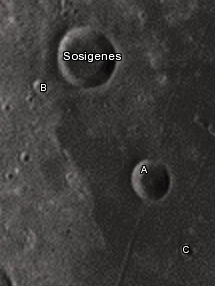|
Sinus Honoris
Sinus Honoris (Latin ''sinus honōris'' "Bay of Honour") is located along the western edge of the Mare Tranquillitatis located on the surface of the near side of the Moon. The selenographic coordinates of this feature are 11.7° N, 17.9° E. It has a diameter of 112 km. Sinus Honoris has a wide mouth and is bordered by uneven terrain to the north and southwest. Where the bay joins the mare, rille Rille (German for 'groove') is typically used to describe any of the long, narrow depressions in the surface of the Moon that resemble channels. The Latin term is ''rima'', plural ''rimae''. Typically, a rille can be several kilometers wi ... systems extend to the north and south. The northern system is designated Rimae Maclear, after the crater Maclear just to the east of the bay. At the southern end of the bay entrance is the Rimae Sosigenes, named for the crater Sosigenes to the south. At the west end of the bay is a finger of mare surface that extends to the northw ... [...More Info...] [...Related Items...] OR: [Wikipedia] [Google] [Baidu] |
Latin
Latin (, or , ) is a classical language belonging to the Italic branch of the Indo-European languages. Latin was originally a dialect spoken in the lower Tiber area (then known as Latium) around present-day Rome, but through the power of the Roman Republic it became the dominant language in the Italian region and subsequently throughout the Roman Empire. Even after the fall of Western Rome, Latin remained the common language of international communication, science, scholarship and academia in Europe until well into the 18th century, when other regional vernaculars (including its own descendants, the Romance languages) supplanted it in common academic and political usage, and it eventually became a dead language in the modern linguistic definition. Latin is a highly inflected language, with three distinct genders (masculine, feminine, and neuter), six or seven noun cases (nominative, accusative, genitive, dative, ablative, and vocative), five declensions, four verb conjuga ... [...More Info...] [...Related Items...] OR: [Wikipedia] [Google] [Baidu] |
Mare Tranquillitatis
Mare Tranquillitatis (Latin ''tranquillitātis'', the Sea of Tranquillity or Sea of Tranquility; see spelling differences) is a lunar mare that sits within the Tranquillitatis basin on the Moon. It is the first location on another world to be visited by humans. The mare material within the basin consists of basalt formed in the intermediate to young age group of the Upper Imbrian epoch. The surrounding mountains are thought to be of the Lower Imbrian epoch, but the actual basin is probably Pre-Nectarian. The basin has irregular margins and lacks a defined multiple-ringed structure. The irregular topography in and near this basin results from the intersection of the Tranquillitatis, Nectaris, Crisium, Fecunditatis, and Serenitatis basins with two throughgoing rings of the Procellarum basin. Palus Somni, on the northeastern rim of the mare, is filled with the basalt that spilled over from Tranquillitatis. This mare has a slight bluish tint relative to the rest of the Moon ... [...More Info...] [...Related Items...] OR: [Wikipedia] [Google] [Baidu] |
Rille
Rille (German for 'groove') is typically used to describe any of the long, narrow depressions in the surface of the Moon that resemble channels. The Latin term is ''rima'', plural ''rimae''. Typically, a rille can be several kilometers wide and hundreds of kilometers in length. However, the term has also been used loosely to describe similar structures on a number of planets in the Solar System, including Mars, Venus, and on a number of moons. All bear a structural resemblance to each other. Structures Three types of rille are found on the lunar surface: * Sinuous rilles meander in a curved path like a mature river, and are commonly thought to be the remains of collapsed lava tubes or extinct lava flows. They usually begin at an extinct volcano, then meander and sometimes split as they are followed across the surface. , 195 sinuous rilles have been identified on the Moon. Vallis Schröteri in Oceanus Procellarum is the largest sinuous rille, and Rima Hadley is the only one ... [...More Info...] [...Related Items...] OR: [Wikipedia] [Google] [Baidu] |
Maclear (crater)
Maclear is a lava-flooded crater on the northwest part of the Mare Tranquillitatis, a lunar mare in the eastern half of the Moon. Its diameter is 20 km. The crater is located to the southwest of the slightly larger Ross. To the southwest of Maclear is Sosigenes, while farther to the south-southeast is Arago. With most of its interior submerged in deposits of basaltic lava, all that remains of this crater is a narrow rim projecting above the surrounding mare. The rim is not quite circular, having a flat outward bulge along the western side. But the rim is relatively uniform in width and is not significantly eroded. The crater rim lies at the southern terminus of a rille belonging to a system that runs along the western edges of Mare Tranquillitatis. The rille system to the north of the crater is designated Rimae Maclear, while the rilles to the south-southwest are named Rimae Sosigenes. The Rimae Maclear stretches for about 100 kilometers, reaching Al-Bakri to the north a ... [...More Info...] [...Related Items...] OR: [Wikipedia] [Google] [Baidu] |
Sosigenes (crater)
Sosigenes is a lunar impact crater on the west edge of Mare Tranquillitatis. Its diameter is 17 km. It was named after ancient Greek astronomer Sosigenes of Alexandria. It lies to the east of the large walled plain Julius Caesar. The crater rim has a high albedo, making it relatively bright. It has a small central rise at the midpoint of the floor. To the east on the mare is a formation of parallel rilles designated the Rimae Sosigenes. These follow a course to the north, and have a length of about 150 kilometers. The small, bowl-shaped crater Sosignes A lies across one of these rilles. Satellite craters By convention these features are identified on lunar maps by placing the letter on the side of the crater midpoint that is closest to Sosigenes. References * * * * * * * * * * * External links at The Moon Wiki [...More Info...] [...Related Items...] OR: [Wikipedia] [Google] [Baidu] |





